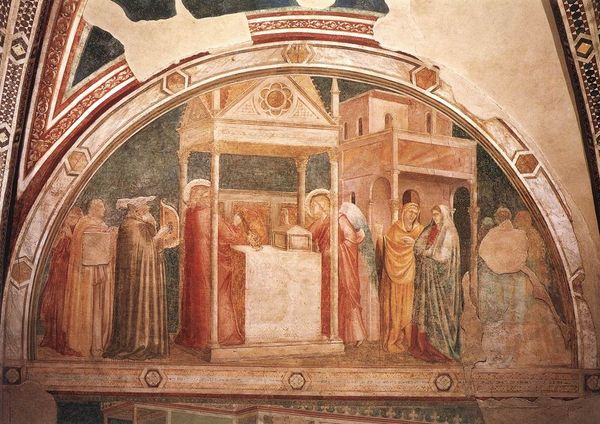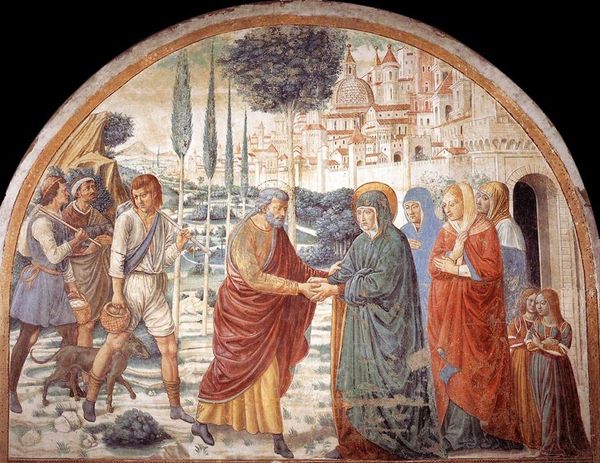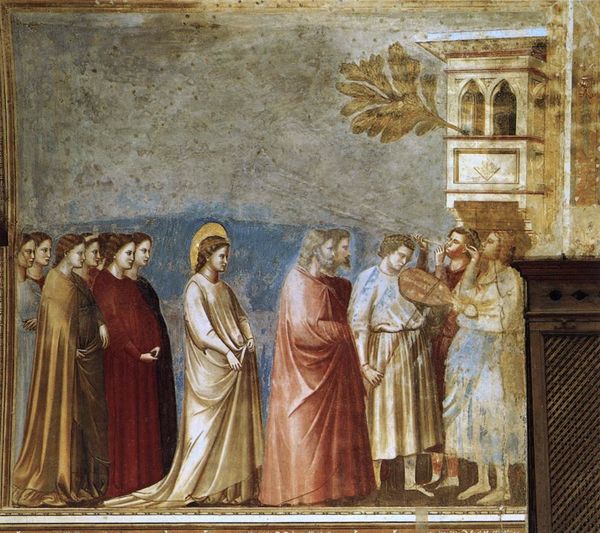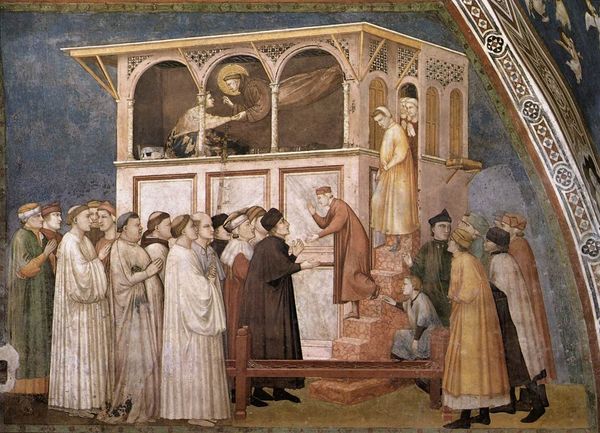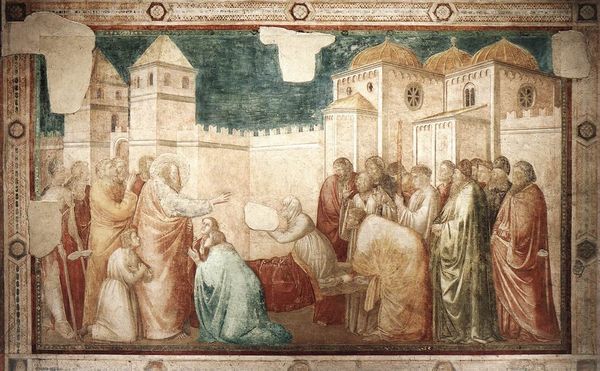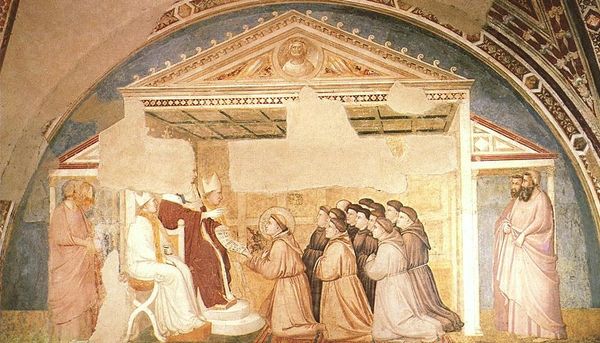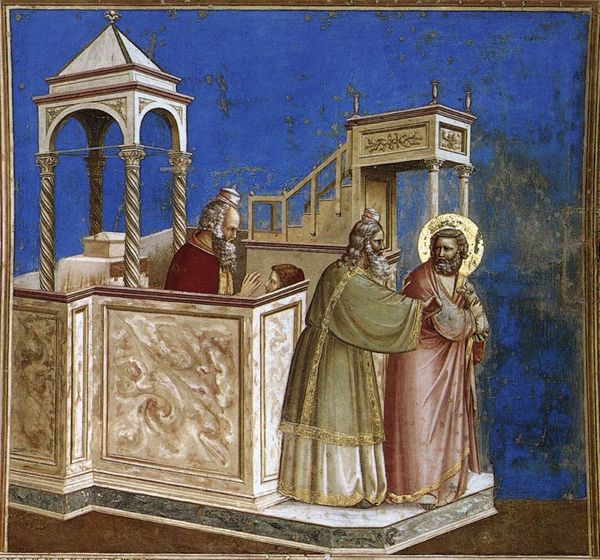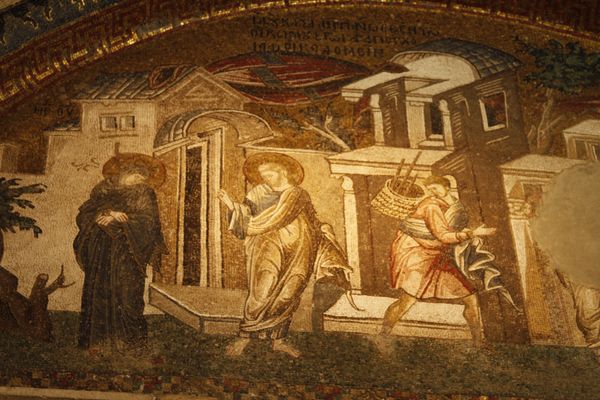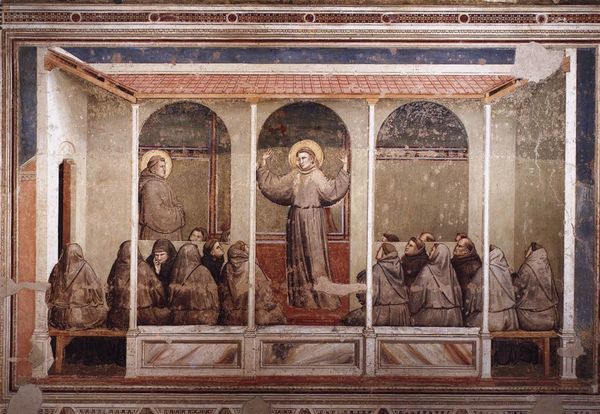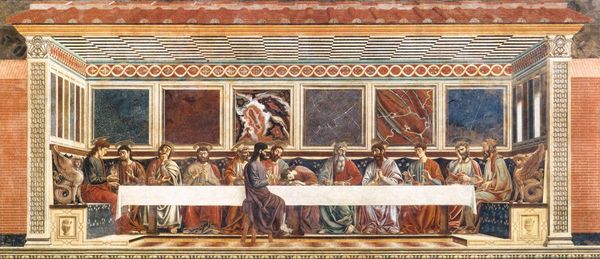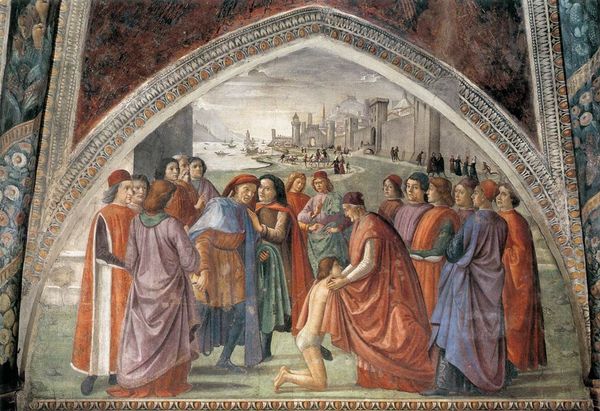
painting, fresco
#
portrait
#
medieval
#
narrative-art
#
painting
#
figuration
#
form
#
fresco
#
christianity
#
line
#
history-painting
#
italian-renaissance
Dimensions: 280 x 450 cm
Copyright: Public domain
Curator: Before us is Giotto’s “St. Francis Renouncing his Worldly Goods,” a fresco completed around 1320, residing in the Basilica di Santa Croce in Florence. Editor: It’s…strikingly balanced. The architecture behind the figures seems to almost echo the compositional division of the scene, a very symmetrical feeling for such a charged moment. Curator: Charged indeed. Consider the stark diagonal line Giotto creates from St. Francis, near naked, renouncing his inheritance, towards his father who pulls away. It’s a visual rupture, isn’t it? Editor: Precisely! It cleaves the fresco in two, a rupture underscored by the physical divide, this movement against stasis. The bodies and draping fabric exhibit form, but Giotto emphasizes flat areas of color which highlights its symbolic impact. Curator: That visual tension mirrors the societal one. The rise of mendicant orders, like the Franciscans, was a direct challenge to the established Church's wealth and power. They served as critics of social order. Editor: A pointed rejection of the era's pervasive materialism, visualized so deftly here. And the two fathers! One carnal, and one spiritual. We find in Giotto's design, that bare trees surround the paternal side on the left versus leafy abundance on the right; the line of men stand as witness on both sides of Francis. Curator: Look at the way he organizes the groups into distinct masses with this color treatment and slight recession in space. While, the spatial representation may not align with a Renaissance perspective that comes later, the sheer attention to this unfolding drama feels remarkably real, not stiff at all as far as figuration goes. Editor: Yes, even in the stylized manner of the era, Giotto finds emotional depths through posture and gesture that move beyond mere narrative illustration. It is also of interest that he separates those embracing materialism and instead leads us into St. Francis embracing nothing instead. Curator: The color palette further reinforces this. Observe the earthy browns and yellows of the father contrasted with the heavenly blues surrounding the bishop who offers St. Francis robes as an attempt at earthly, religious coverage instead of leaving him bare. Editor: True. Analyzing this fresco’s structure, it isn't just about surface aesthetics. This form holds such significance in its historical frame and resonates far beyond it, prompting discussions about choices that change the direction of our own individual lives. Curator: Indeed, a powerful statement captured permanently onto a Florentine wall, serving as a lens into art, social practice and even theology from Giotto’s point of view.
Comments
No comments
Be the first to comment and join the conversation on the ultimate creative platform.
